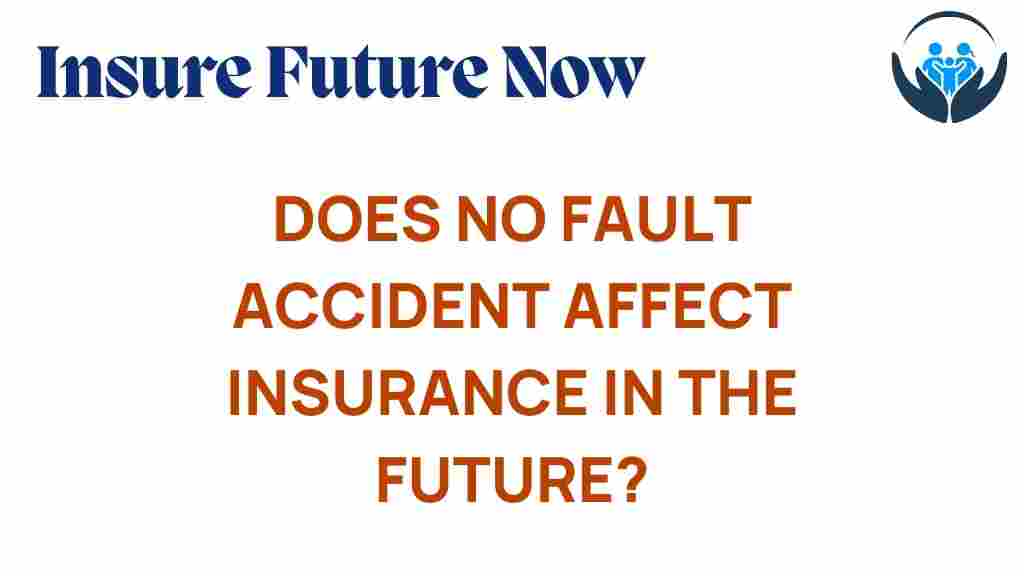How Does a No-Fault Accident Impact Your Future Insurance Rates?
Understanding the implications of a no-fault accident on your future insurance rates is crucial for every driver. No-fault insurance systems are designed to streamline the claims process and reduce litigation, but they also come with their own set of challenges. In this article, we will explore how a no-fault accident can affect your insurance rates, future premiums, and overall driving record. We will also discuss the claims process, coverage implications, and potential policy adjustments you might face after an accident.
The Basics of No-Fault Insurance
No-fault insurance is a type of coverage that allows drivers to receive compensation for injuries and damages from their own insurance company, regardless of who was at fault in an accident. This system aims to reduce the need for litigation and ensure that victims receive timely medical care and financial support.
Key characteristics of no-fault insurance include:
- Each driver’s insurance pays for their own medical expenses and lost wages.
- Legal action against the other driver is typically limited to cases involving severe injuries or significant damages.
- Insurance rates are influenced by various factors, including driving history, location, and the specifics of the incident.
How a No-Fault Accident Affects Your Future Insurance Rates
Experiencing a no-fault accident can have several implications for your future insurance rates and premiums. Let’s break down the potential impacts:
1. Claims Process and Its Effects
The claims process following a no-fault accident can influence your insurance rates. When you file a claim with your insurer, they may assess your driving record, previous claims history, and the nature of the accident. If the accident results in a claim, your insurer may consider it when determining your future premiums.
2. Impact on Future Premiums
After a no-fault accident, your insurance company may raise your premiums, depending on several factors:
- Severity of the Accident: If the accident resulted in significant injuries or damages, your insurer might raise your rates more than if it were a minor incident.
- Claims History: Frequent claims, even under a no-fault system, can lead to higher premiums.
- Driving Record: If you have a clean driving record prior to the accident, the impact on your rates may be less severe than for a driver with a history of incidents.
3. Coverage Implications
After a no-fault accident, you may need to reevaluate your insurance coverage. The implications can include:
- Increased Premiums: As mentioned, your premiums may increase based on the accident.
- Policy Adjustments: Your insurer might suggest adjustments to your coverage to mitigate future risks, possibly requiring you to carry higher liability limits.
- Discounts and Benefits: Some insurers offer discounts for safe driving. A no-fault accident may disqualify you from these benefits.
The Role of Your Driving Record
Your driving record plays a significant role in how a no-fault accident impacts your future insurance rates. A history of accidents, even if they are no-fault, can signal to insurers that you are a higher-risk driver. Here’s how it works:
- Points System: Many states use a points system to track driving offenses. A no-fault accident may still add points to your record, affecting your rates.
- Insurance Risk Assessment: Insurers assess your risk based on your driving history. A clean record may help mitigate the impact of a no-fault accident.
Liability Considerations
Even in a no-fault system, liability can influence your insurance rates. If it is determined that you were at fault in the accident, your insurance rates are likely to be affected more significantly. Here are some aspects to consider:
- At-Fault Accidents: If you are deemed at fault, your premiums may increase more sharply compared to a no-fault designation.
- Legal Fees: In cases where injuries occur, even in a no-fault system, legal fees may arise if disputes over liability occur.
Steps to Take After a No-Fault Accident
Here’s a step-by-step guide on what to do after experiencing a no-fault accident:
- Ensure Safety: First and foremost, ensure that all parties are safe. Call emergency services if necessary.
- Document the Accident: Take photos of the scene, gather witness statements, and exchange information with the other driver.
- Notify Your Insurer: Contact your insurance company as soon as possible to report the accident.
- Follow the Claims Process: Work with your insurer to navigate the claims process. Provide all required documentation promptly.
- Review Your Coverage: After the accident, review your insurance policy and consider whether adjustments are necessary.
- Monitor Your Premiums: Keep an eye on your future insurance statements to see how your premiums are affected.
Troubleshooting Tips for Managing Future Premiums
After experiencing a no-fault accident, here are some troubleshooting tips to help manage your future premiums:
- Shop Around: Compare rates from different insurance providers as they may assess risk differently.
- Take a Defensive Driving Course: Completing a course can often lead to discounts on your premium.
- Increase Your Deductible: Opting for a higher deductible can reduce your premium costs.
- Maintain a Clean Driving Record: Focus on safe driving to improve your record over time, which can help lower rates.
- Request Discounts: Always ask your insurer about available discounts based on your situation.
Conclusion
In conclusion, a no-fault accident can significantly impact your future insurance rates and premiums. Understanding the claims process, coverage implications, and how your driving record plays a role can help you navigate the aftermath more effectively. By being proactive and informed, you can mitigate the financial consequences of a no-fault accident and work toward maintaining lower insurance rates in the future.
For more information on insurance rates and the implications of accidents, you can visit Insurance.com for comprehensive guides and resources.
If you’re looking to adjust your insurance policy or need assistance with the claims process, consider reaching out to a trusted insurance agent who can provide personalized guidance tailored to your needs.
This article is in the category Rates and created by InsureFutureNow Team
